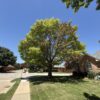Phyllosticta Leaf Spot
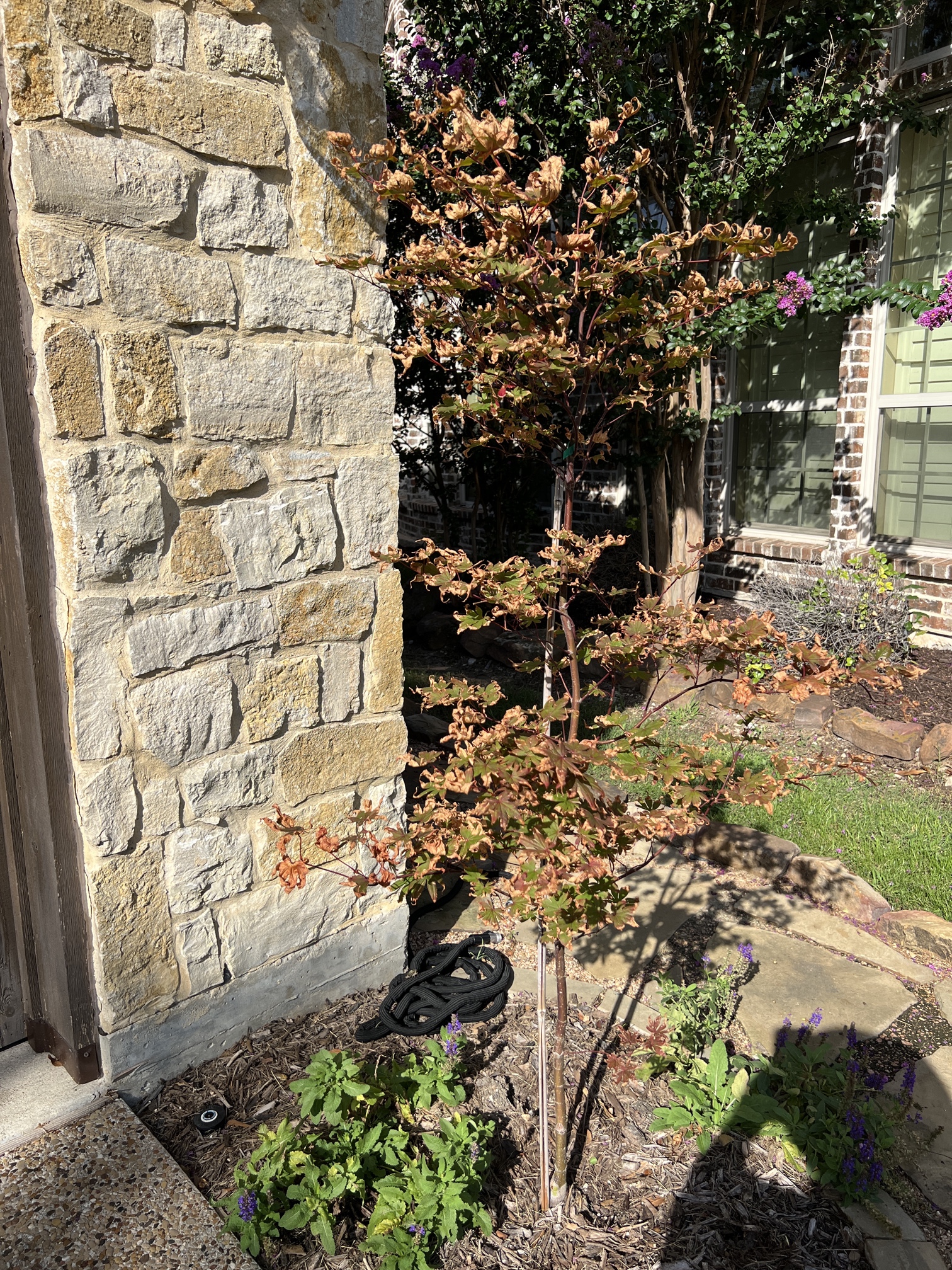
At Texas Tree Surgeons, we frequently get asked, “Why is my tree dropping leaves so early?” or “What are these dark spots on my crape myrtle?” One possible culprit, especially during warm, wet seasons is Phyllosticta leaf spot, a fungal disease that affects a wide range of trees in the Dallas-Fort Worth area.
Phyllosticta Red Flags
- Small, round to oval leaf spots that may be beige, gray, brown, or black, often with a yellow halo
- Spots may merge to form larger blotches, sometimes dropping out to leave ragged holes
- Premature yellowing and leaf drop, especially in late summer
- Tiny black fruiting bodies (“pepper-like dots”)
- Twig dieback or stress-related growth stunting
What Is Phyllosticta?
Phyllosticta is a group of fungi that infects the foliage of various tree species, particularly under humid conditions. The fungus spreads through wind and rain splash, especially after prolonged periods of moisture. While often more cosmetic than life-threatening, repeated infections and premature defoliation can lead to long-term stress, reduced vigor, and increased vulnerability to other pests and diseases.
Why Trees Get Phyllosticta
This disease is more common during wet years and tends to hit trees already under stress—such as those experiencing:
- Drought
- Nutritional deficiencies (especially iron)
- Soil compaction or poor drainage
- Poor air circulation
- Recent transplant shock
Newly planted trees and those growing in less-than-ideal conditions are particularly vulnerable.
How a Texas Tree Surgeons ISA Certified Arborist Diagnosis Phyllosticta
Phyllosticta can be easily confused with other fungal leaf spots or more serious issues like anthracnose, bacterial leaf scorch, or nutrient imbalances which is why having a certified arborist do an assessment is crucial in getting the right diagnosis and treatment. Our ISA Certified Arborists at Texas Tree Surgeons are trained to identify these diseases, assess tree health, and create a customized treatment plan that works for your landscape.
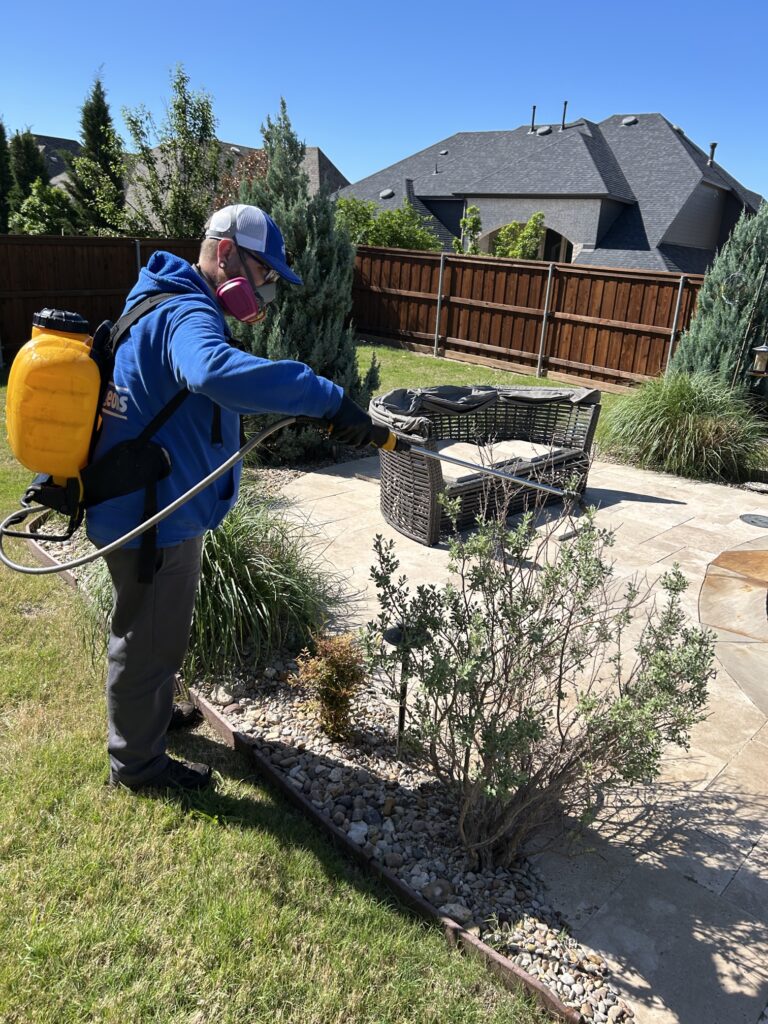
How Texas Tree Surgeons Treats / Manages Phyllosticta
In most cases cultural practices such as; removing infected leaves, improving air circulation, and proper tree care is sufficient. However, if your tree has experienced repeated or severe defoliation a Certified Arborist may recommend a preventative fungicide in early spring.
What can Homeowners do to help their trees with Phyllosticta?
While Phyllosticta leaf spot usually doesn’t kill trees outright, it can weaken them over time—especially if infections are frequent or severe. Here’s how to manage it:
- Rake and Remove Fallen Leaves | Infected leaves harbor spores that can overwinter and re-infect in the spring. Always discard debris in the trash, never compost.
- Thin the Canopy | Prune dead or overcrowded branches to improve air circulation and reduce the humid conditions fungi love.
- Support Tree Health | Healthy trees are more resilient. That means; fertilize in early spring, apply mulch to conserve moisture and reduce root competition, and water deeply but infrequently to encourage strong roots
- Avoid Overhead Watering | Use drip irrigation or soaker hoses, not sprinklers when possible to keep foliage dry.
What Will Happen to my Tree with Phyllosticta?
If your tree is showing signs of distress, don’t wait. While Phyllosticta may seem like a minor annoyance but repeated infections can contribute to a decline spiral.
What Species are Texas Tree Surgeons Arborists Seeing this Effect?
- Crape Myrtle
- Maple
- Sycamore
- Boxelder
- Cherry
- Holly
- Magnolia
- Oak (especially Red oak varieties)
- And many other landscape trees

At Texas Tree Surgeons we love trees and keeping trees healthy year round is our number one priority. Whether you’re noticing leaf spots, early defoliation, or just want peace of mind, we’re here to help. Contact Texas Tree Surgeons today to schedule a consultation and protect your trees from preventable stress and disease.
Tree Health Care
View Photos of our ISA Certified Arborists & Tree Health Care Technicians Providing Consultation and Care

PREVENTATIVE EAB TREATMENT
If there is EAB activity within a few miles of where you live or property you manage we recommend preventative systemic insecticide treatment applied by a licensed TDA tree health care technician. EAB treatment lasts for 2 years and must be applied regularly to protect ash trees from infection.

OAK WILT TREATMENT
As oak wilt is a systemic, vascular disease, the most effective treatments consist of injecting the infected trees with a fungicidal chemical. The only currently recommended fungicide is Alamo®, a formulation of the fungicide propiconazole. The fungicide is administered through holes drilled in the root flare of the infected tree and should only be applied by Texas Department of Agriculture Licensed Applicators.

STRESSED MAGNOLIA | AFTER
This after photo was taken June 27, 2024 of a magnolia tree after receiving multiple interventions to improve its health. In addition to a tree health care plan of a deep root fertilization with Biopack plus and Sea3 applied by our TDA licensed technician the owner also fixed the irrigation and cleared the root flare. The difference in health is beautiful.

FERTILIZATION
Our Tree Health Care Programs are designed to deliver the right nutrients at the right times throughout the year. We use the highest quality soil conditioners and fertilizers that are delivered at critical points throughout the seasons to optimize the growth and health of trees.

DEEP ROOT INJECTION SERVICES
At Texas Tree Surgeons our deep root injection services provides fertilization deep into the soil. Our unique mixtures combine macro- and micro-nutrients, root growth stimulators, soil conditioners, beneficial biotics (both mycorrhizal fungi and rhizobacteria), and organic materials to cultivate the optimum natural growth environment.

ROOT PRUNING POST AIR SPADING
To correct this improperly planted tree our Tree Health Care Technicians air spade to expose the root flare and to prune away girdling roots. You can learn more about how to properly plant a tree here.

GIRDLING ROOTS
This tree was planted too deep and has several girdling roots (roots that circle the tree and do no flare out) that left unmanaged would eventually kill the tree. After air spading our Tree Health Care Technicians are pruning the roots and adjusting the soil around the tree to expose the root flare to improve tree health.

INSPECTING FOR POSSIBLE DECAY
Sometimes issues with a tree aren't clearly visible on the outside so an arborist will need to inspect the interior. An arborist does this by probing with a small knife to see how extensive the decay in a region of a tree is. Arborists are able to use this information along with other signs to determine if there are potential structural issues or possible increased chances for failure.

MEASURING DBH
The best way to approximate the size of a tree is to measure their dbh, (diameter, breast, height). This enables our arborists to estimate the amount needed for Tree Health Care products or pricing for Tree Removal.
Related Blogs
Similar blogs related to this topic

Top 10 Things We'd Tell You as an Arborist if We Weren't Afraid of Hurting Your Feelings
This is a list of tree care worst practices that you, or someone you know may be guilty of. Read the following list at your own risk. You’ve been warned, feelings may get hurt. 1.…
Read more
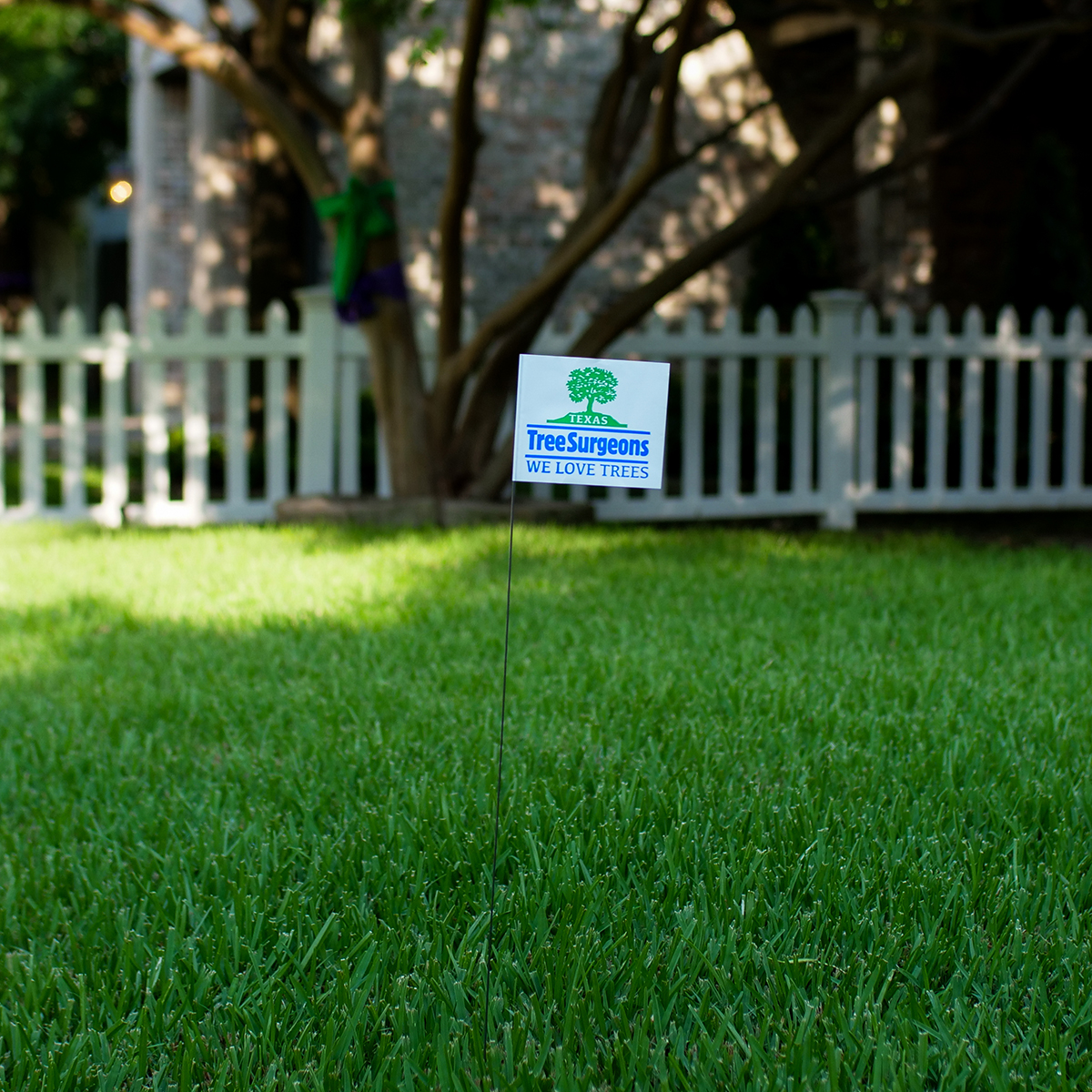
Avoid These Tree Care Mistakes for a Healthy Landscape
Below is a list of overlooked mistakes that could jeopardize the health of your trees. From missteps in pruning to incorrect watering practices, discover how to give your trees the care they deserve. Red oak…
Read more
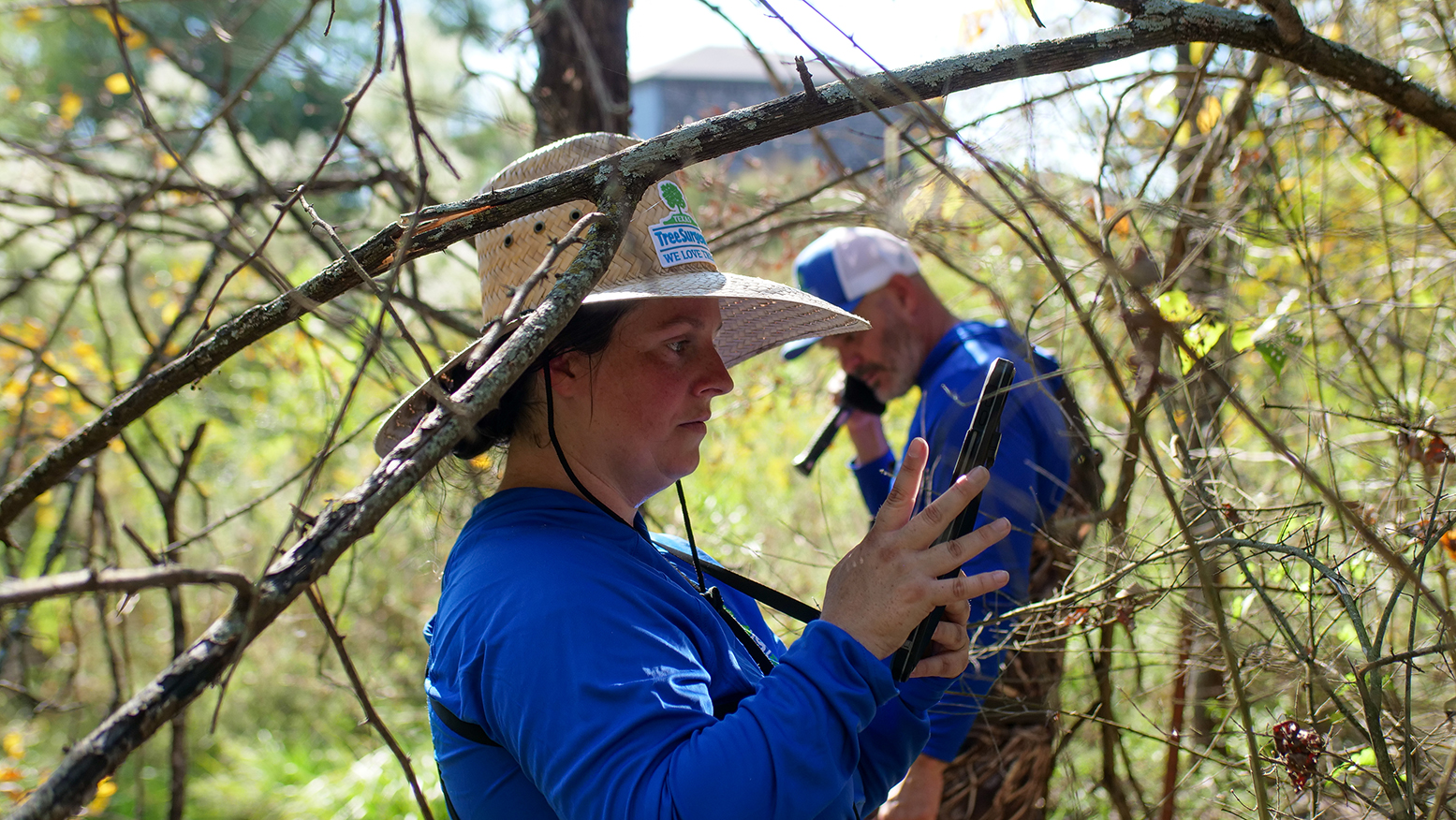
Why do Arborists Recommend Soil Sampling in Urban Areas like Dallas?
Soil sampling is a crucial practice in urban areas like Dallas. It helps arborists make informed decisions about your landscape to ensure a healthy urban ecosystem. Our native soils vary widely—from the dense clays of…
Read more